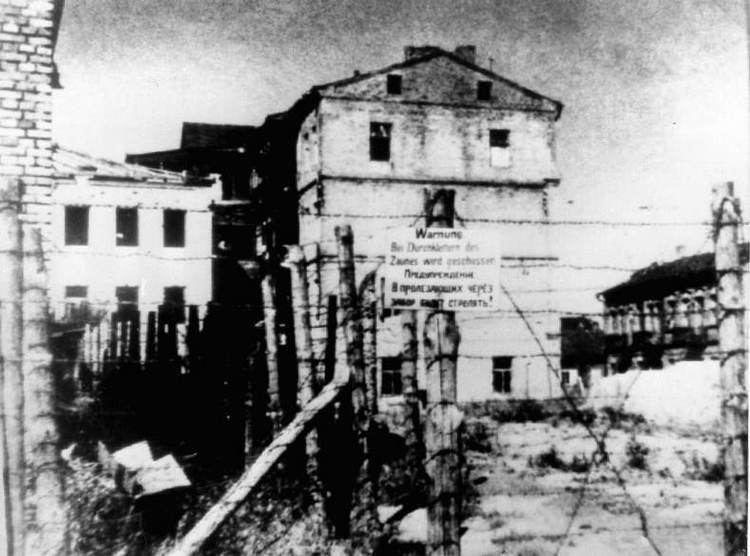 | ||
Jewish partisans minsk ghetto rescue from interviews from the underground by phillip alloy
The Minsk Ghetto was created soon after the German invasion of the Soviet Union. It was one of the largest in Belorussian SSR, and the largest in the German-occupied territory of the Soviet Union. It housed close to 100,000 Jews, most of whom perished in The Holocaust.
Contents
- Jewish partisans minsk ghetto rescue from interviews from the underground by phillip alloy
- March 24 the minsk ghetto jewish resistance and soviet internationalism epstein ph d
- History
- Resistance
- Historiography
- References

March 24 the minsk ghetto jewish resistance and soviet internationalism epstein ph d
History
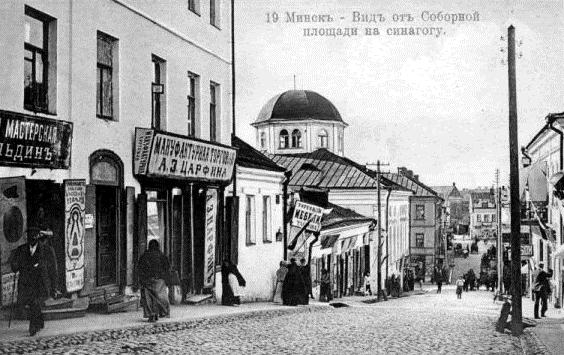
The Soviet census of 1926 showed 53,700 Jews living in Minsk (constituting close to 41% of the city's inhabitants).
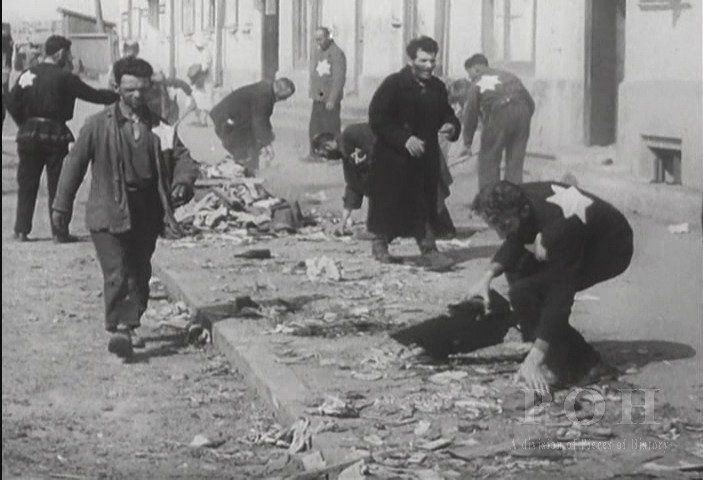
The ghetto was created soon after the German invasion of the Soviet Union and capture of the city of Minsk, capital of the Belorussian SSR, on 28 June 1941. On the fifth day after the occupation, 2,000 Jewish intelligents were massacred by the Germans; from then on, murders of Jews became a common occurrence. About 20,000 Jews were murdered within the first few months of the German occupation, mostly by the Einsatzgruppen squads.
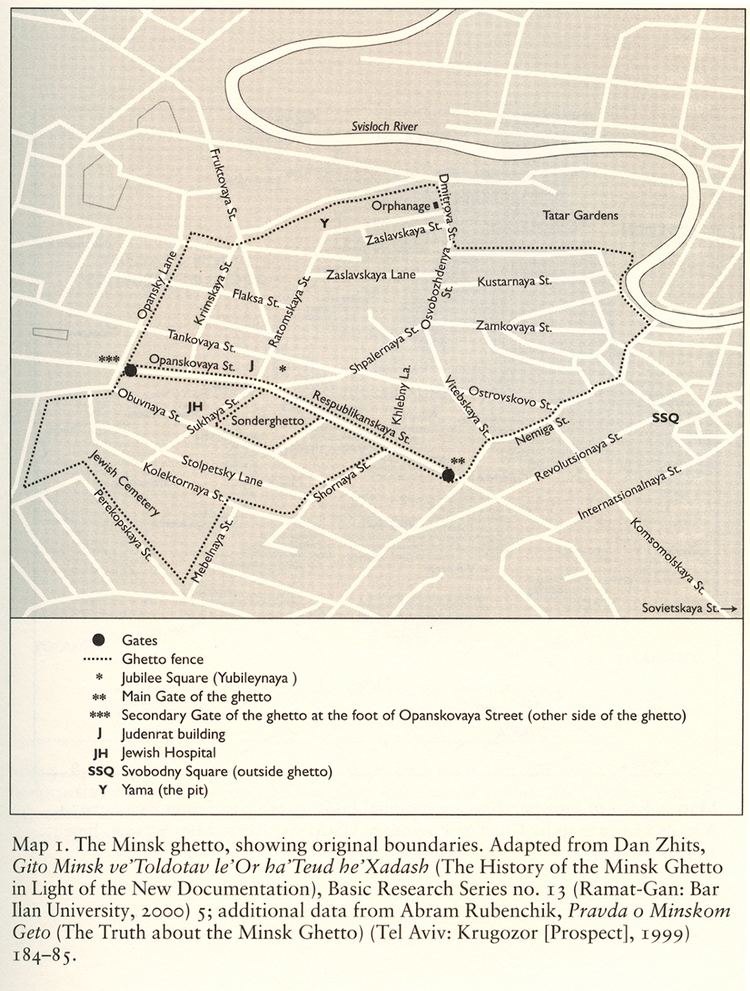
On 17 July 1941 the German occupational authority, the Reichskommissariat Ostland, was created. On 20 July, the Minsk Ghetto was established. A Jewish Council (Judenrat) was established as well. The total population of the ghetto was about 80,000 (over 100,000 according to some sources), of which about 50,000 were pre-war inhabitants, and the remainder (30,000 or more) were refugees and Jews forcibly resettled by the Germans from nearby settlements.

In November 1941 a second ghetto was established in Minsk for Jews deported from the West, known as Ghetto Hamburg, which adjoined the main Minsk ghetto. Above the entrance to this separate ghetto was a sign: Sonderghetto (Special Ghetto). Every night the Gestapo would murder 70–80 of the new arrivals. This ghetto was divided into five sections, according to the places from which the inhabitants came: Hamburg, Frankfurt, Berlin, the Rhineland, Bremen, and Vienna. Most of the Jews in this ghetto were from Germany and the Protectorate of Bohemia and Moravia; at its height it had about 35,000 residents. Little contact was permitted between the inhabitants of the two ghettos.
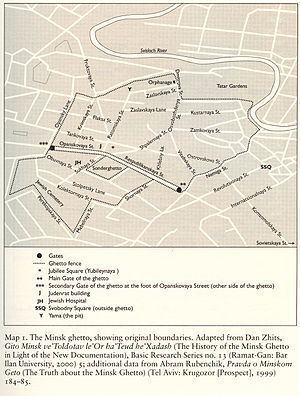
As in many other ghettos, Jews were forced to work in factories or other German-run operations. Ghetto inhabitants lived in extremely poor conditions, with insufficient stocks of food and medical supplies.

In March 1942 approximately 5,000 Jews were killed nearby where "The Pit" memorial to the Minsk ghetto now stands. By August fewer than 9,000 Jews were left in the ghetto according to German official documents. The ghetto was liquidated on 21 October 1943, with many Minsk Jews perishing in the Sobibor extermination camp. Several thousand were massacred at Maly Trostenets extermination camp (before the war, Maly Trostenets was a village a few miles to the east of Minsk). By the time the Red Army retook the city on 3 July 1944, there were only a few Jewish survivors.
Resistance
The Minsk Ghetto is notable for its large scale resistance organization, which cooperated closely with Soviet partisans. About 10,000 Jews were able to escape the ghetto and join partisan groups in the nearby forests. Barbara Epstein estimates that perhaps a half of them survived, and notes that all together, perhaps as many as 30,000 people tried to escape the Minsk Ghetto to join the partisans (but 20,000 of them could have died along the way).
Historiography
The story of the Minsk ghetto was not well researched until the late 20th century. Officials of the Belorussia communist party did not organize any evacuation of the town's inhabitants before fleeing the German advance. They later collaborated in creating a false story that such an evacuation did happen. They also tried to discredit the Minsk resistance as having ties with the Nazis. In the United States, research into communist resistance was not a priority during the Cold War, and Jewish historiography did not wish to concentrate on the issue of communist Jewish partisans (see also Red scare).
